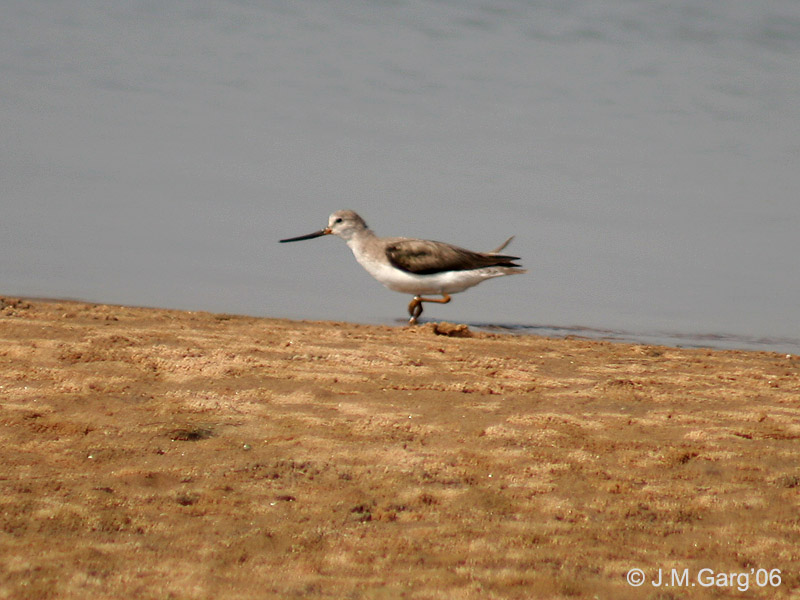- Terek Sandpiper
Taxobox
name = Terek Sandpiper

image_caption = Wintering bird inChilika (Orissa ),India
status = LC
status_system = iucn3.1
regnum =Animalia
phylum =Chordata
classis =Aves
subclassis =Neornithes
infraclassis =Neognathae
superordo =Neoaves
ordo =Charadriiformes
familia =Scolopacidae
subordo = Scolopaci
genus = "Xenus "
genus_authority = Kaup, 1829
species = "X. cinereus"
binomial = "Xenus cinereus"
binomial_authority = (Güldenstädt, 1775)The Terek Sandpiper ("Xenus cinereus") is a small
wader and the only member of the genus "Xenus". Thisbird breeds near water in thetaiga ofFinland and northernAsia , and migrate south in winter to tropical coasts in eastAfrica , south Asia andAustralia , usually preferring muddy areas. It is a rare vagrant in westernEurope . The Terek Sandpiper is one of the species to which the "Agreement on the Conservation of African-Eurasian Migratory Waterbirds" (AEWA ) applies.Slightly larger than the
Common Sandpiper at 22-25 cm length, its long upcurved bill makes it very distinctive. As the scientific specific name implies, this wader has a grey back, face and breast in all plumages. The belly is whitish and the legs yellow. The call is a high whistle.It feeds in a distinctive and very active way, chasing
insect s and other mobile prey, and sometimes then running to the water's edge to wash its catch. It lays three or four eggs in a lined ground scrape."Xenus" is part of the shank-tattler-
phalarope clade and less closely related to thecalidrid sandpipers [Paton "et al." (2003), Thomas "et al" (2004)] . Based on the degree ofDNA sequence divergence and putative shank and phalarope fossils from around theOligocene /Miocene boundary some 23-22million years ago , the Terek Sandpiper presumably diverged from their relatives in theLate Oligocene ; given the much higher diversity of the prehistoric members of the group inEurasia it is likely that they originated there, possibly being isolated as the remains of theTurgai Sea dried up, which happened just around this time. [Mlíkovský (2002), Paton "et al." (2003)]Footnotes
References
*|year=2004|id=49061|title=Xenus cinereus|downloaded=12 May 2006 Database entry includes justification for why this species is of least concern
* (2002): "Cenozoic Birds of the World, Part 1: Europe". Ninox Press, Prague. ISBN 80-901105-3-8 [http://www.nm.cz/download/JML-18-2002-CBE.pdf PDF fulltext]
* (2003): RAG-1 sequences resolve phylogenetic relationships within charadriiform birds. "Mol. Phylogenet. Evol." 29(2): 268-278. doi|10.1016/S1055-7903(03)00098-8 (HTML abstract)
* (2004): A supertree approach to shorebird phylogeny. "BMC Evol. Biol." 4: 28. doi|10.1186/1471-2148-4-28 [http://www.pubmedcentral.org/picrender.fcgi?artid=515296&blobtype=pdf PDF fulltext] [http://www.pubmedcentral.org/articlerender.fcgi?artid=515296#supplementary-material-sec Supplementary Material]
Wikimedia Foundation. 2010.
